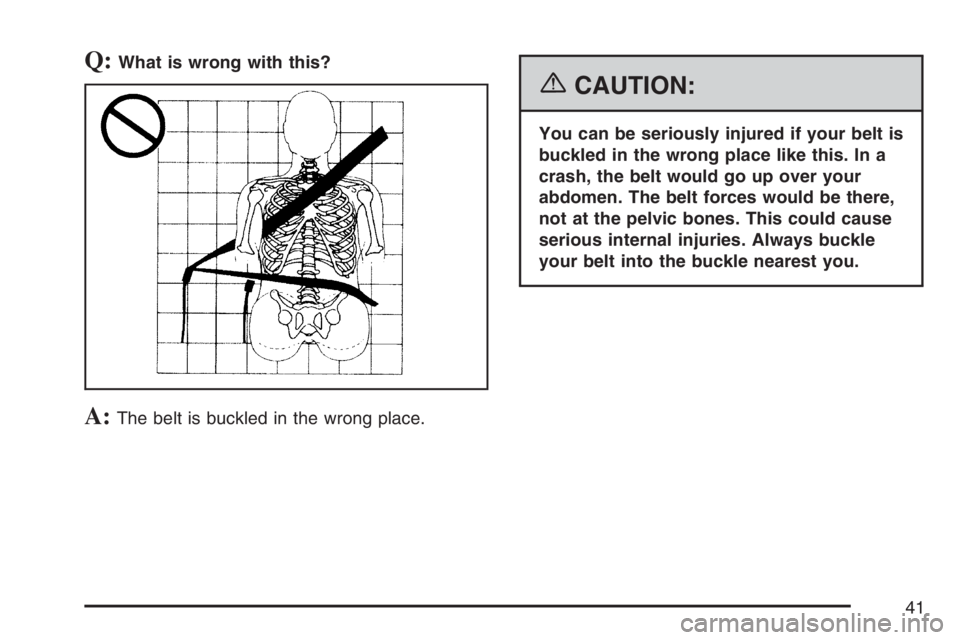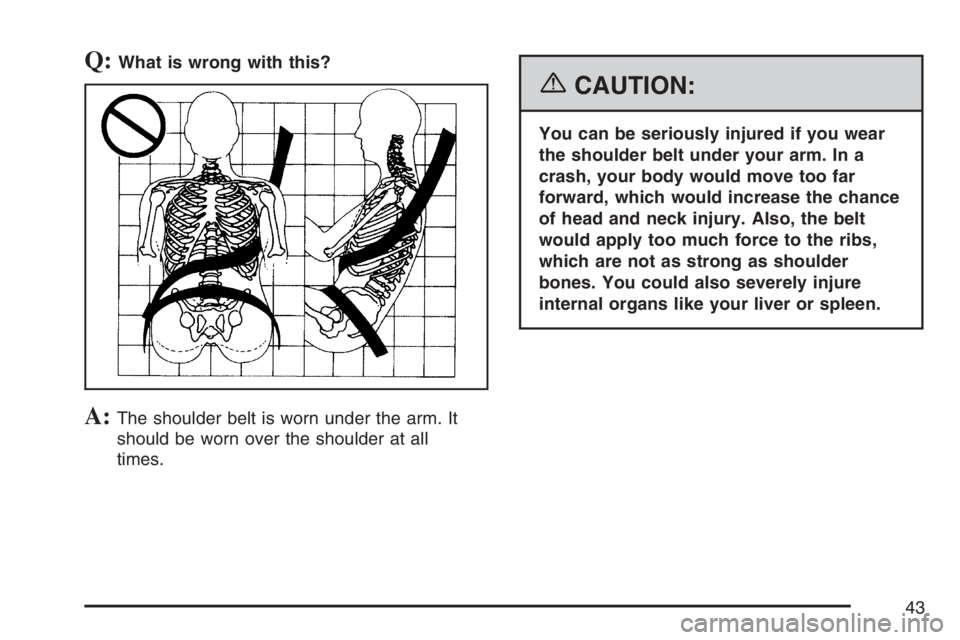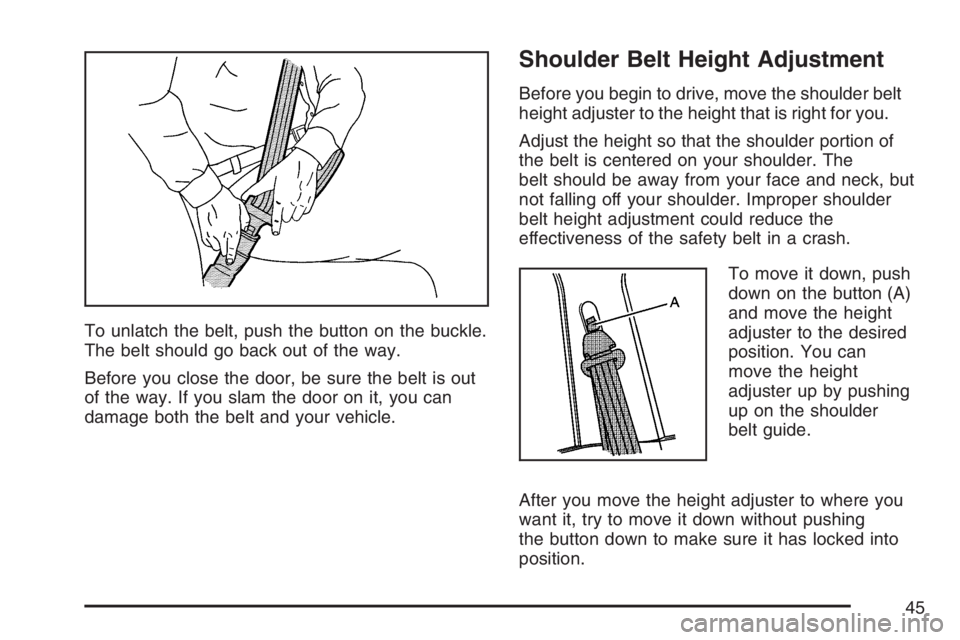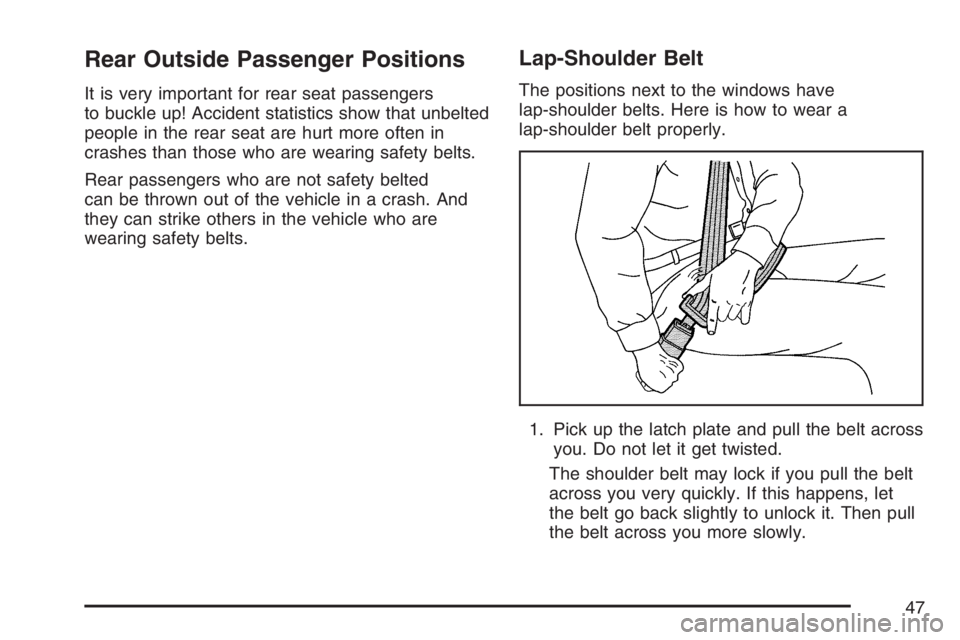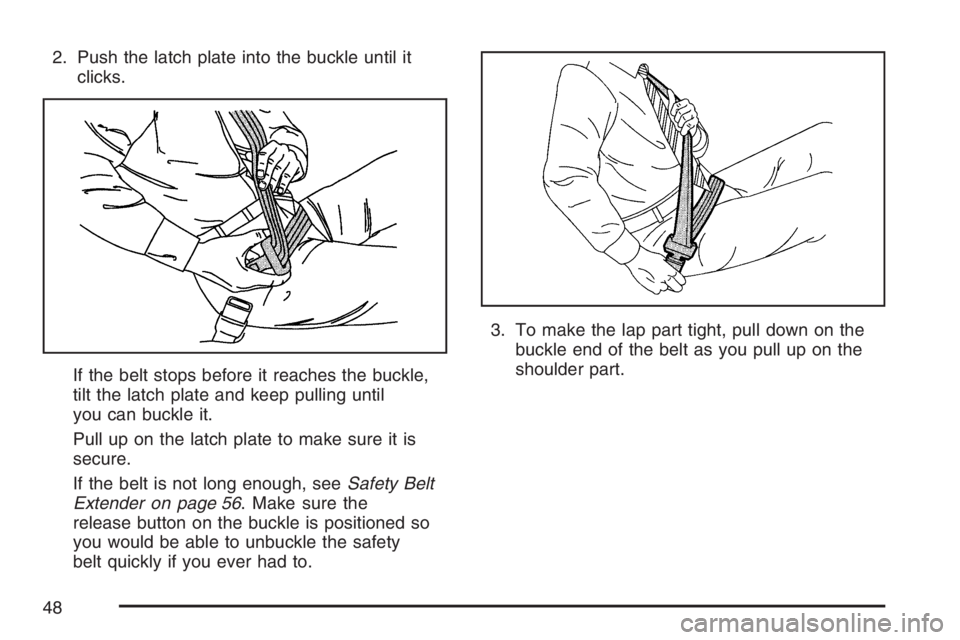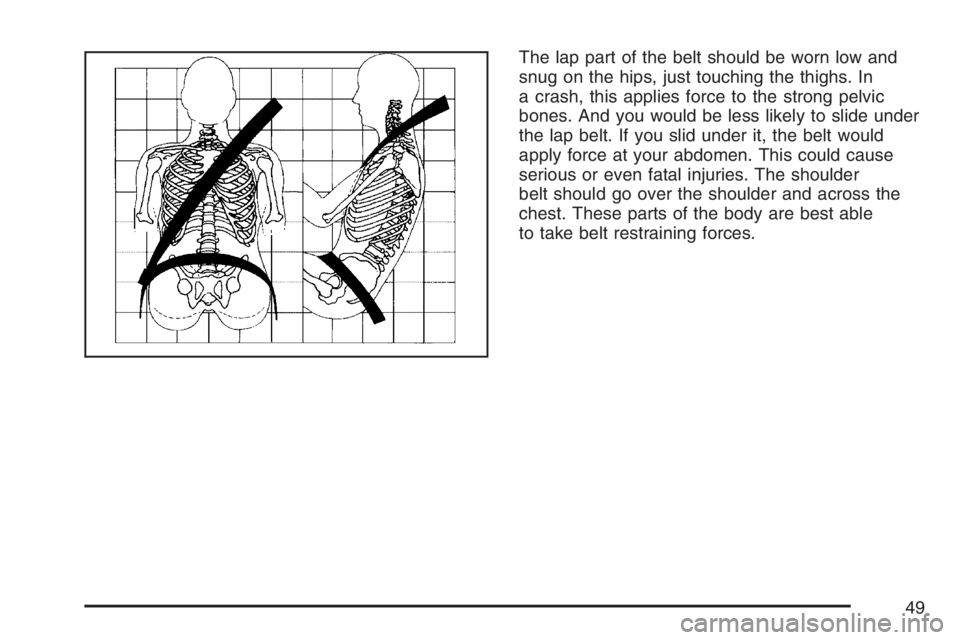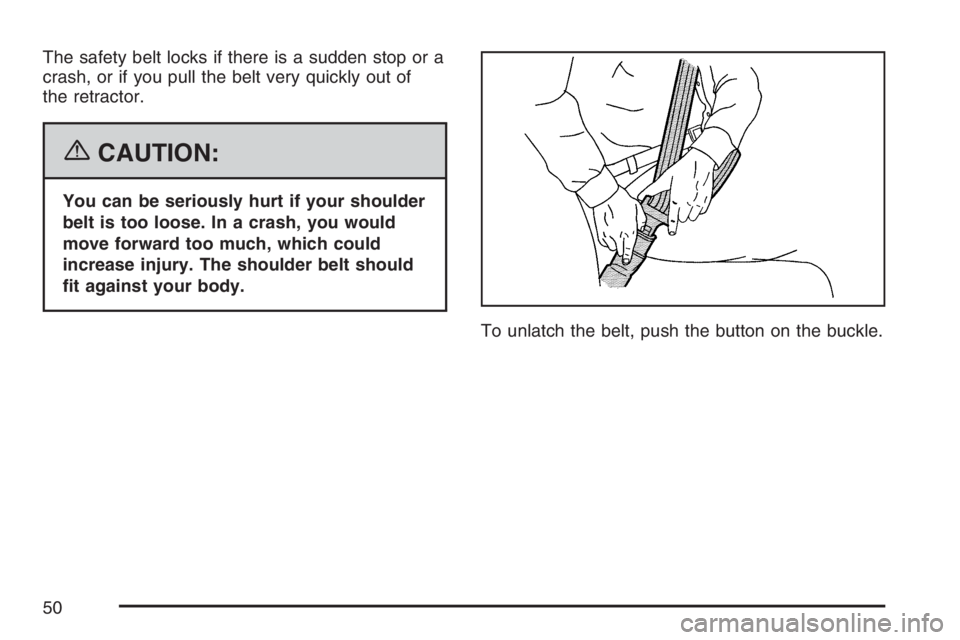BUICK RANDEZVOUS 2007 Service Manual
RANDEZVOUS 2007
BUICK
BUICK
https://www.carmanualsonline.info/img/43/35366/w960_35366-0.png
BUICK RANDEZVOUS 2007 Service Manual
Trending: height, AUX, manual radio set, remote control, turn signal, lock, seat memory
Page 41 of 528
Q:What is wrong with this?
A:The belt is buckled in the wrong place.
{CAUTION:
You can be seriously injured if your belt is
buckled in the wrong place like this. In a
crash, the belt would go up over your
abdomen. The belt forces would be there,
not at the pelvic bones. This could cause
serious internal injuries. Always buckle
your belt into the buckle nearest you.
41
Page 42 of 528
Q:What is wrong with this?
A:The belt is over an armrest.
{CAUTION:
You can be seriously injured if your belt
goes over an armrest like this. The belt
would be much too high. In a crash, you
can slide under the belt. The belt force
would then be applied at the abdomen,
not at the pelvic bones, and that could
cause serious or fatal injuries. Be sure the
belt goes under the armrests.
42
Page 43 of 528
Q:What is wrong with this?
A:The shoulder belt is worn under the arm. It
should be worn over the shoulder at all
times.
{CAUTION:
You can be seriously injured if you wear
the shoulder belt under your arm. In a
crash, your body would move too far
forward, which would increase the chance
of head and neck injury. Also, the belt
would apply too much force to the ribs,
which are not as strong as shoulder
bones. You could also severely injure
internal organs like your liver or spleen.
43
Page 44 of 528
Q:What is wrong with this?
A:The belt is twisted across the body.
{CAUTION:
You can be seriously injured by a twisted
belt. In a crash, you would not have the
full width of the belt to spread impact
forces. If a belt is twisted, make it straight
so it can work properly, or ask your dealer
to �x it.
44
Page 45 of 528
To unlatch the belt, push the button on the buckle.
The belt should go back out of the way.
Before you close the door, be sure the belt is out
of the way. If you slam the door on it, you can
damage both the belt and your vehicle.
Shoulder Belt Height Adjustment
Before you begin to drive, move the shoulder belt
height adjuster to the height that is right for you.
Adjust the height so that the shoulder portion of
the belt is centered on your shoulder. The
belt should be away from your face and neck, but
not falling off your shoulder. Improper shoulder
belt height adjustment could reduce the
effectiveness of the safety belt in a crash.
To move it down, push
down on the button (A)
and move the height
adjuster to the desired
position. You can
move the height
adjuster up by pushing
up on the shoulder
belt guide.
After you move the height adjuster to where you
want it, try to move it down without pushing
the button down to make sure it has locked into
position.
45
Page 46 of 528

Safety Belt Use During Pregnancy
Safety belts work for everyone, including pregnant
women. Like all occupants, they are more likely
to be seriously injured if they do not wear
safety belts.
A pregnant woman should wear a lap-shoulder
belt, and the lap portion should be worn as low as
possible, below the rounding, throughout the
pregnancy.The best way to protect the fetus is to protect the
mother. When a safety belt is worn properly, it
is more likely that the fetus will not be hurt
in a crash. For pregnant women, as for anyone,
the key to making safety belts effective is wearing
them properly.
Right Front Passenger Position
To learn how to wear the right front passenger’s
safety belt properly, seeDriver Position on
page 36.
The right front passenger’s safety belt works the
same way as the driver’s safety belt — except
for one thing. If you ever pull the shoulder portion
of the belt out all the way, you will engage the
child restraint locking feature. If this happens, let
the belt go back all the way and start again.
46
Page 47 of 528
Rear Outside Passenger Positions
It is very important for rear seat passengers
to buckle up! Accident statistics show that unbelted
people in the rear seat are hurt more often in
crashes than those who are wearing safety belts.
Rear passengers who are not safety belted
can be thrown out of the vehicle in a crash. And
they can strike others in the vehicle who are
wearing safety belts.
Lap-Shoulder Belt
The positions next to the windows have
lap-shoulder belts. Here is how to wear a
lap-shoulder belt properly.
1. Pick up the latch plate and pull the belt across
you. Do not let it get twisted.
The shoulder belt may lock if you pull the belt
across you very quickly. If this happens, let
the belt go back slightly to unlock it. Then pull
the belt across you more slowly.
47
Page 48 of 528
2. Push the latch plate into the buckle until it
clicks.
If the belt stops before it reaches the buckle,
tilt the latch plate and keep pulling until
you can buckle it.
Pull up on the latch plate to make sure it is
secure.
If the belt is not long enough, seeSafety Belt
Extender on page 56. Make sure the
release button on the buckle is positioned so
you would be able to unbuckle the safety
belt quickly if you ever had to.3. To make the lap part tight, pull down on the
buckle end of the belt as you pull up on the
shoulder part.
48
Page 49 of 528
The lap part of the belt should be worn low and
snug on the hips, just touching the thighs. In
a crash, this applies force to the strong pelvic
bones. And you would be less likely to slide under
the lap belt. If you slid under it, the belt would
apply force at your abdomen. This could cause
serious or even fatal injuries. The shoulder
belt should go over the shoulder and across the
chest. These parts of the body are best able
to take belt restraining forces.
49
Page 50 of 528
The safety belt locks if there is a sudden stop or a
crash, or if you pull the belt very quickly out of
the retractor.
{CAUTION:
You can be seriously hurt if your shoulder
belt is too loose. In a crash, you would
move forward too much, which could
increase injury. The shoulder belt should
�t against your body.
To unlatch the belt, push the button on the buckle.
50
Trending: adding oil, oil, battery, emergency towing, brake light, tire pressure, spark plugs
